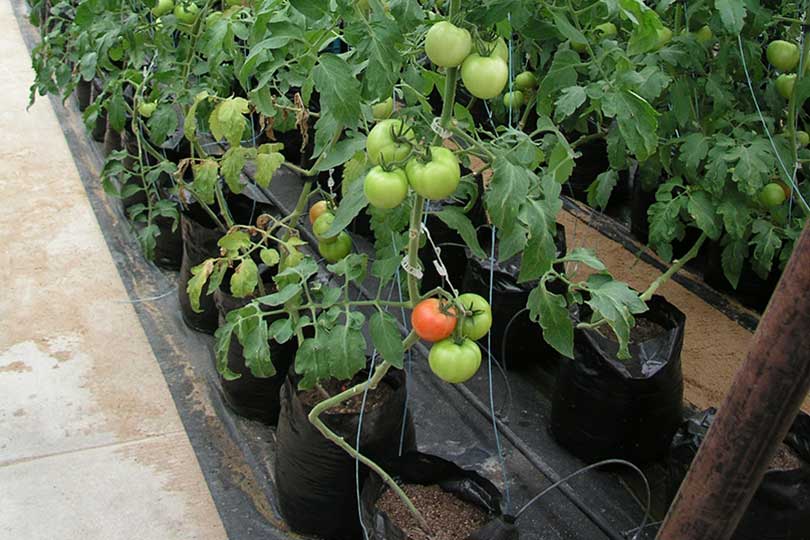Supermarkets in the High Plains were looking for a steady and constant supply of high quality, locally grown tomatoes and other vegetables. A high tunnel vegetable project aims to help meet the demand and offers potential for Texas farmers.
Dr. Charlie Rush, an AgriLife Research plant pathologist in Amarillo, said the project is funded by the U.S. Department of Agriculture Ogallala Research Initiative and the Department of Agriculture Specialty Crop Block Grant Program.
The construction of four high tunnels began in April and the seed varieties that were selected for the study were planted in a greenhouse. They were then transplanted in early May.
Researchers overcame challenges and setbacks during the project’s inaugural season.
Fencing was installed after rabbits ate early crops. Installing water and electricity to the high tunnels also was a challenge. Extreme heat caused a number of newly planted seedlings to die, and the entire study was replanted.
And another study was lost to a high incidence of tomato spotted wilt in June.
The first tomatoes were harvested on Sept. 27, and the fruit was picked weekly, divided into marketable and unmarketable, and weighed before being sent to the Vegetable and Fruit Improvement Center at Texas A&M University in College Station for quality analysis.
“We delivered tomatoes to United Supermarket in Amarillo, and they were thrilled to get them,” Rush told AgriLife Today. “The next day we delivered jalapeños and poblano peppers. We can produce a quality product and there is clearly a market for the produce.”
The yields of tomatoes planted in the high tunnel plots have been higher than in the field, Rush said. They produce about 25 percent more than plants growing in outside plots, and quality inside the tunnels was as good as, or better, than those grown outside.
Tomatoes from four cultivars were raised in the high tunnel plots. Three cultivars were from the Texas A&M program and a private company in California provided the final seed.
The Texas A&M seeds outperformed the California variety in yield, taste and appearance in a test.
“That means you can get more tomatoes inside the high tunnels and get just as high quality of a product as trying to grow a tomato outside,” Rush said. “Often, you hear that greenhouse-grown tomatoes are not very good. And certainly tomatoes that are shipped from hundreds if not thousands of miles away and end up in the grocery store are often not very tasty, especially when they have to be picked green and shipped so far.”
Rush said they will complete analyzing data from this project in the coming months.
“We will also quantify seasonal pest pressure, which will be useful in providing recommendations for planting time and pest scouting in the High Plains,” Rush said. “Quality and yield data will be analyzed to compare the cultivars used in this study and high tunnel and field production.”
Researchers will also analyze water use for growing tomatoes in high tunnels versus the amount of water required to grow a corn crop.
“We are convinced this research will reveal a number of new business opportunities for agriculture in the Texas Panhandle,” Rush said. “We are very excited about its potential for the future. We are saving water, producing a commodity that people like and that is locally grown, so it looks like it’s a win-win for everybody.”

